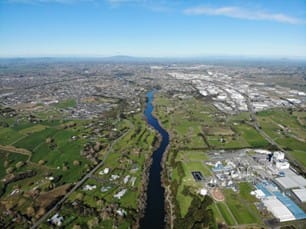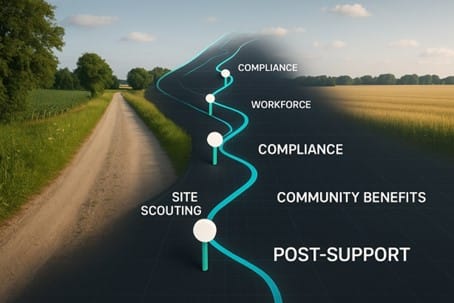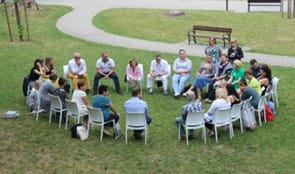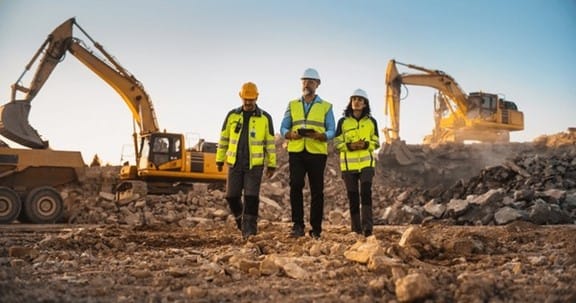The FDI Roadmap: Designing a Seamless Investment Process for Rural Ireland By Damien Reilly

- Introduction
Rural Ireland holds immense potential as a destination for investment-led job creation, yet this potential remains largely untapped. While national FDI strategies have succeeded in attracting large-scale investment to urban centres, regional areas often find themselves bypassed—not due to a lack of opportunity, but due to the absence of coordinated local systems that meet investor expectations. Rural communities possess strategic land, skilled labour, and quality of life advantages, but without clear pathways for entry and support, investment tends to cluster elsewhere.
The current model of investment attraction depends heavily on national-level agencies such as IDA Ireland. These organisations play a critical role in positioning Ireland globally, yet their reach is often limited when it comes to the granular challenges faced by investors navigating rural terrain. Site unavailability, inconsistent planning timelines, and a lack of joined-up local supports create a fragmented environment that discourages long-term commitment to non-urban regions (Department of Enterprise, Trade and Employment, n.d.).
This article proposes a new approach—what I term a community-first FDI framework. It is built on the idea that rural areas must not only be visible to global investors, but must be ready—with mapped sites, planning pathways, local facilitators, and trusted community engagement models. By drawing on both international research and my direct experience brokering land access and investment conversations in Meath, I offer a practical roadmap for how rural Ireland can become a confident, capable destination for high-value, employment-generating investment (Petreski & Olczyk, 2025).

- Barriers to Investment in Rural Areas
While the economic potential of rural Ireland is frequently acknowledged in speeches and strategy papers, real-world investors often face an uphill battle when trying to engage with non-urban communities. Despite the presence of available land, eager workforces, and willing public bodies, the process of investing in rural regions remains opaque, slow, and full of friction.
The first major barrier is site readiness. While many counties have industrial-zoned land or vacant plots, these are rarely pre-mapped, infrastructure-ready, or marketed in an investor-friendly format. Investors are often left to rely on informal contacts, outdated listings, or third-party consultants to identify viable locations. This uncertainty is compounded by planning delays. Navigating county planning procedures can be inconsistent, with approval timelines varying significantly and limited clarity on zoning interpretations, environmental conditions, or service availability.
The fragmentation of support agencies further complicates the landscape. While IDA Ireland, Local Enterprise Offices (LEOs), and local authorities all play roles in economic development, they rarely operate in unison. An investor may engage with IDA only to be referred to a county planning department, which in turn defers to a local landowner or utility board—creating a loop of deferrals with no clear lead. As noted in the 2024 EY FDI report, Ireland’s competitiveness is slipping due to a lack of regional coordination and follow-through (EY, 2024).
A final barrier is community uncertainty or resistance. In rural areas where trust is personal and space is limited, sudden investor interest can trigger concern about noise, environmental impact, or land use change. Without early engagement or clear local benefits, even beneficial investments may be met with opposition. This reflects a failure of communication, not a failure of vision. As recent legal analysis highlights, Ireland’s new FDI screening regulations will demand even clearer protocols to ensure transparency and community oversight (White & Case LLP, 2025).
From my own work facilitating site visits and discussions with prospective investors in logistics and pharmaceuticals, I have seen how promising deals falter when the support system is unclear or when local concerns are not proactively addressed. A seamless, community-informed FDI process is no longer optional. It is essential.

- The FDI Roadmap Framework
To unlock rural Ireland’s investment potential, a coordinated, step-by-step approach must replace today’s fragmented systems. Investors—particularly those unfamiliar with Irish planning and regulatory frameworks—need a reliable process, a local guide, and a clear timeline. The proposed FDI Roadmap Framework addresses these needs while ensuring community interests are protected and value is retained locally.
The first stage is pre-engagement and site scouting. Local authorities, supported by national funding, should establish trained “site scouts” responsible for identifying, mapping, and preparing a portfolio of investment-ready sites. This includes zoning verification, infrastructure audits (utilities, roads, broadband), and environmental due diligence. These assets must be compiled into a public, live digital database, similar to IDA Ireland’s property tool but scaled to the local level.
Once interest is established, the investor onboarding phase begins. Here, a designated Local Investment Coordinator—possibly under a Rural Enterprise Action Network (REAN–FDI) model—acts as a single point of contact, guiding investors through introductions, compliance steps, and partnership opportunities. This person should be empowered to liaise across LEOs, planning offices, education partners, and infrastructure providers. Clarity, not complexity, is the goal.
The third stage focuses on planning and compliance acceleration. Investors should have access to fast-track pathways for projects that meet employment and sustainability criteria. Local authorities can pre-approve change-of-use templates, establish threshold exemptions for small builds, and streamline documentation through one unified digital portal. According to the OECD (2019), place-based strategies are most effective when they empower local actors to adapt national frameworks to their regional realities.
The fourth pillar is workforce integration. FDI should not result in jobs imported from elsewhere while local people remain excluded. County-level education providers and employers must be engaged early to create tailored recruitment and training programmes. This includes apprenticeships, work placements, and short-term skills bootcamps aligned to investor needs. Petreski and Olczyk (2025) demonstrate that the employment impact of FDI is highest when embedded in a supportive labour ecosystem.
Equally important is community benefit structuring. Any significant investment should include a Community Impact Agreement detailing job targets, environmental safeguards, infrastructure contributions, and local sourcing commitments. These should be developed through dialogue with local residents and community organisations, ensuring transparency and long-term goodwill.
Finally, a successful roadmap includes post-entry support. Investors should receive local integration assistance, quarterly performance check-ins, and access to follow-on funding or expansion sites. A dashboard of metrics—jobs created, training provided, taxes contributed—should be publicly available to ensure accountability and foster community pride in hosting quality investment.
Together, these steps form a practical, locally driven approach to attracting and managing FDI. They shift the role of rural regions from passive recipients to active partners in economic development. As IDA Ireland’s new strategy (2025–2029) recognises, regional success depends on empowered local ecosystems, not just national promotion (IDA Ireland, 2025). The FDI Roadmap offers rural Ireland the tools—and the confidence—to compete on those terms.

- Building Trust with Communities
No inward investment can be truly successful without the support of the people who live closest to it. While job creation and regional development are vital goals, rural communities must be treated not simply as beneficiaries of foreign direct investment, but as active stakeholders in how that investment unfolds. The challenge is not just to attract capital, but to build trust.
In many rural towns, the arrival of an external investor can raise legitimate concerns: Will this affect housing prices? Will farmland be lost? Will noise, traffic, or pollution increase? These questions are not signs of resistance to progress—they are reflections of lived experience. Too often, rural areas have hosted developments that delivered short-term gain but left long-term social or environmental costs. In this context, proactive, transparent engagement is essential.
One key mechanism to build trust is the use of Community Benefit Agreements (CBAs). These are formal, co-designed documents that outline specific commitments by the investor to the local community. This may include hiring quotas for local residents, support for public infrastructure (e.g., roads, schools, broadband), sustainability measures, or contributions to local services. Crucially, these agreements must be public, monitored, and enforceable. They turn vague promises into shared accountability.
Alongside CBAs, Damien proposes the establishment of Citizen Investment Oversight Boards. These locally appointed bodies—comprising residents, business owners, and public officials—would provide ongoing oversight of major investment projects. Their role would be to ensure delivery on agreed terms, facilitate community feedback, and publish annual impact reports. This model not only supports transparency but empowers citizens to participate in shaping the long-term outcomes of regional development.
As Pike, Rodríguez-Pose, and Tomaney (2017) argue, successful place-based development must reflect the values and aspirations of those who live there. It cannot be imported wholesale. Similarly, the European Microfinance Network (n.d.) has noted that community trust is a major determinant of how inclusive and sustainable external investment becomes in rural settings.
From Damien’s campaign work and public consultations, it is clear that communities are open to change—but only if they see themselves in the process. People are not asking for veto power; they are asking for voice, fairness, and respect. A community-first FDI model ensures that investment is not just accepted, but welcomed—and that its benefits are felt not only in balance sheets, but in the everyday lives of the people who call rural Ireland home.

- Case Reflections and Lessons
The development of a community-first FDI roadmap is not a theoretical exercise—it stems from practical, on-the-ground work connecting global investment interest with local opportunity. Over the past several years, I have been directly involved in efforts to facilitate conversations between foreign investors and rural stakeholders, particularly around land access, infrastructure readiness, and compliance navigation. These experiences have highlighted both the promise and the friction points of rural investment in Ireland.
One such example involved exploratory discussions with a European pharmaceutical group considering a satellite operation in County Meath. The company had capital, urgency, and a clear desire to locate in Ireland due to EU regulatory advantages and access to skilled talent. However, once the conversation moved beyond national agencies and into site-specific engagement, the process became more difficult. No single body could confirm utility access, road connectivity timelines, or fast-track planning status. Each answer required three follow-ups, and each site visit revealed new uncertainties.
What should have been a straightforward process became a lesson in fragmentation. Despite the goodwill of local actors, there was no integrated process to convert interest into action. This is where I saw the need for a dedicated, politically supported local facilitation structure—not just as an administrative unit, but as a broker of trust between investor and place.
In another instance, conversations with Gulf-based investors interested in industrial land in Leinster stalled after prolonged delays in title clarification, environmental assessment coordination, and unclear community reception. In both cases, what was missing was not land or ambition—it was coordination, communication, and confidence.
These situations reflect the exact gaps identified in Ireland’s own national reviews. The Central Statistics Office (2024) confirms that while Ireland continues to attract large volumes of FDI, much of it remains concentrated in already-developed areas, reinforcing regional imbalances. Meanwhile, IDA Ireland’s 2025–2029 strategy explicitly recognises the need for balanced regional development, including place-readiness and enhanced investor pathways for Tier 2 and Tier 3 locations.
These reflections reinforce the value of the roadmap presented here. Investors are not deterred by the idea of coming to rural Ireland—they are deterred by uncertainty, delay, and lack of coordination. A clear process, grounded in local relationships and political will, can change that. The potential is there. The lessons have been learned. What remains is the decision to act on them.
- Conclusion and Policy Implications
If Ireland is to deliver truly inclusive economic growth, it must evolve its foreign direct investment strategy from a national promotional model to a locally activated framework. Rural communities like those in Meath are not lacking in potential—they are lacking in systems that are fit for purpose. The FDI Roadmap presented in this article outlines a model rooted in speed, trust, and coordination. It is designed not to replace existing structures, but to complement and strengthen them where it matters most: at the local interface between investor and community.
A successful regional investment strategy depends on more than incentives and property listings. It requires reliable planning processes, integrated support teams, empowered local representatives, and meaningful engagement with the people most directly affected. When these elements are in place, rural regions can compete confidently for high-value investment—on their own terms, with their own identity intact.
The policy implications are clear. County-level investment facilitation teams, backed by a REAN–FDI model, should be piloted in select rural areas. Community Benefit Agreements and Citizen Oversight Boards should become standard in all major investment projects. And most importantly, the lived knowledge of local leaders—entrepreneurs, employers, and independent representatives—must be embedded in the design and delivery of investment pathways.
As Pike, Rodríguez-Pose, and Tomaney (2017) argue, sustainable regional development arises not from external imposition, but from internal capability. Ireland already has the talent, the land, and the trust networks in place. The next step is political: to connect what we already have with what we want to become.
Investment should not bypass rural Ireland. It should be welcomed, guided, and grown from within.
References
Central Statistics Office. (2024). Foreign Direct Investment Annual 2023. CSO Ireland. https://www.cso.ie/en/releasesandpublications/ep/p-fdia/foreigndirectinvestmentannual2023/
Department of Enterprise, Trade and Employment. (n.d.). Foreign Direct Investment. Government of Ireland. https://enterprise.gov.ie/en/what-we-do/trade-investment/foreign-direct-investment-fdi-/
European Microfinance Network. (n.d.). European Microfinance Network: The voice of European microfinance. Retrieved May 28, 2025, from https://www.european-microfinance.org/
- (2024). Ireland ranked 11th for foreign direct investment as Europe loses momentum. Ernst & Young. https://www.ey.com/en_ie/newsroom/2024/05/ireland-ranked-11th-for-foreign-direct-investment-as-europe-loses-fdi-momentum
IDA Ireland. (2025). Adapt Intelligently: A Strategy for Sustainable Growth and Innovation, 2025–2029. https://www.idaireland.com/latest-news/press-release/ida-ireland-launches-new-five-year-strategy
Petreski, M., & Olczyk, M. (2025). Foreign direct investment and job creation in EU regions. arXiv preprint arXiv:2503.23999. https://arxiv.org/abs/2503.23999
Pike, A., Rodríguez-Pose, A., & Tomaney, J. (2017). Local and regional development (2nd ed.). Routledge.
White & Case LLP. (2025). Foreign Direct Investment Reviews 2025: Ireland. https://www.whitecase.com/insight-our-thinking/foreign-direct-investment-reviews-2025-ireland
OECD. (2019). OECD principles on rural policy. OECD Publishing. https://www.oecd.org/en/topics/sub-issues/rural-service-delivery/oecd-principles-on-rural-policy.html

